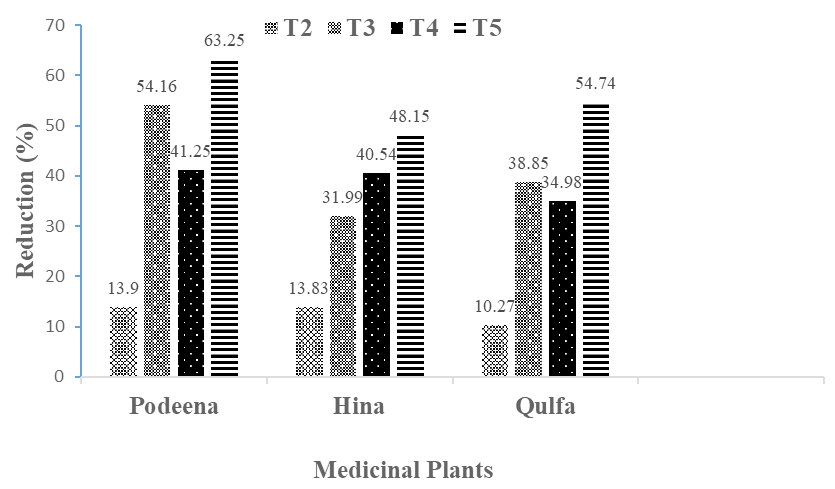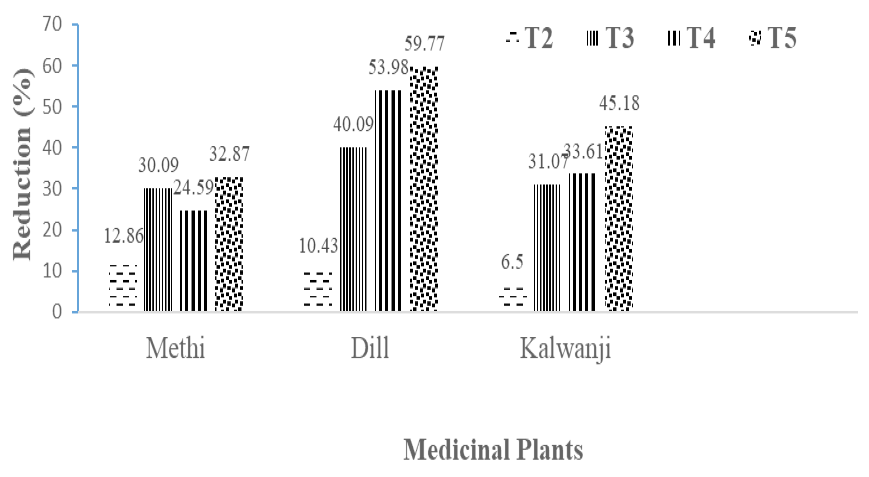Biomass Yield Response of Different Medicinal Plants Under Dual Stress of Salinity and Sodicity
Biomass Yield Response of Different Medicinal Plants Under Dual Stress of Salinity and Sodicity
Ghulam Qadir1, Khalil Ahmed1*, Muhammad Ashfaq Anjum1, Quais Muhammad Affan2, Muhammad Zaighum Mushtaq3, Muhammad Amjad Qureshi4, Amar Iqbal Saqib1, Hafeezullah Rafa1, Abdul Wakeel1, Ghulam Shabir1, Muhammad Rizwan1, Muhammad Qaisar Nawaz1 and Muhammad Faisal Nawaz1
Percent reduction (over control) in biomass yield of Podeena, Hina and Qulfa with increasing levels of ECe and SAR (average of three seasons). T2 (ECe 6 (dSm-1) + SAR 25), T3 (ECe 6 (dSm-1) + SAR 35), T4 (ECe 8 (dSm-1) + SAR 25), T5 (ECe 8 (dSm-1) + SAR 35).
Percent reduction (over control) in biomass yield of Methi, Dill and Kalwanji with increasing levels of ECe and SAR (average of three seasons). T2 (ECe 6 (dSm-1) + SAR 25), T3 (ECe 6 (dSm-1) + SAR 35), T4 (ECe 8 (dSm-1) + SAR 25), T5 (ECe 8 (dSm-1) + SAR 35).









